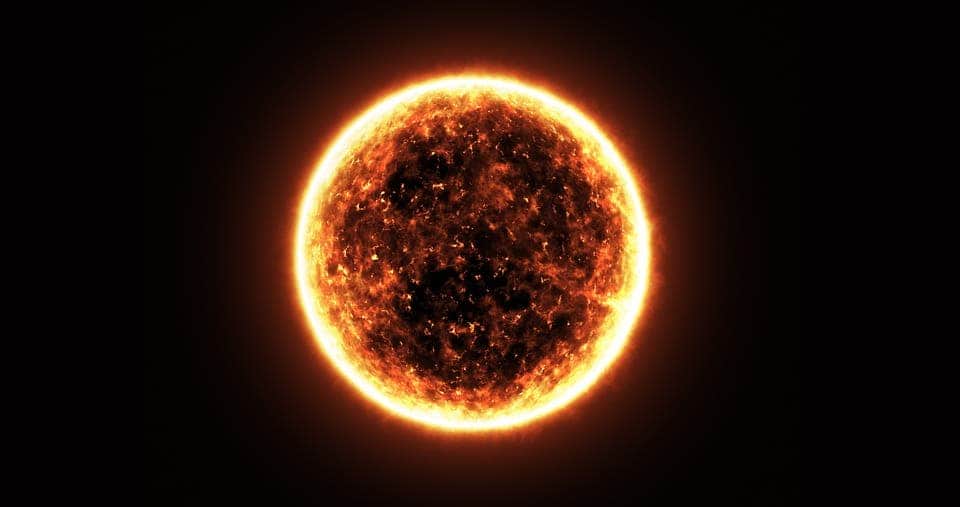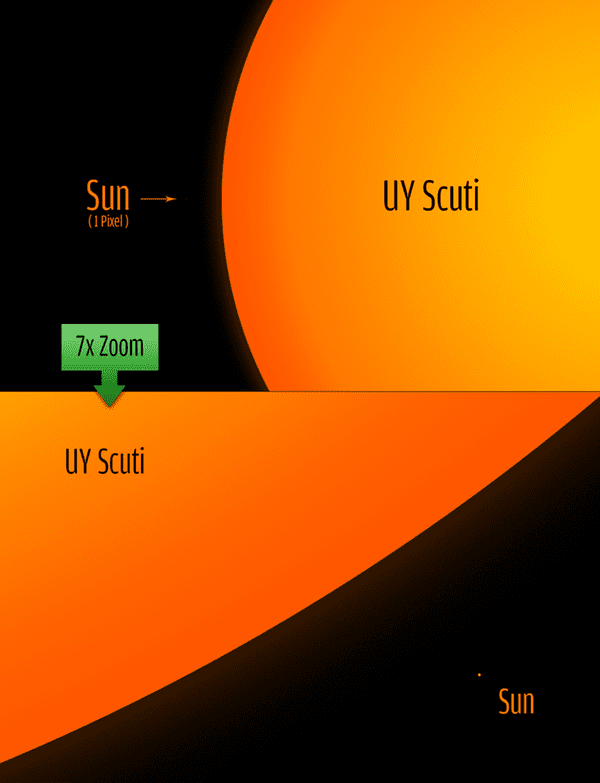
Carl Sagan once said that there were more stars in the universe than grains of sand from every beach across the globe. According to a 2016 report published in the Astronomical Journal, that’s probably true.
The study based on data from the Hubble Space Telescope over 20 years approximated that there are 2 trillion galaxies in the universe — that’s galaxies, not stars. When you consider that the Milky Way — a rather average galaxy — contains 100 to 400 billion stars, you start to get an idea of just how ginormous the universe really is.
So when we look at the largest known star, there is a quite a large sample size. To get an idea, let’s take a look at our very own star. The sun measures 870,000 miles (1.4 million km) across. You could fit a million Earths in there, with room to spare. And the sun is not even that large. In fact, our sun is pretty small as far as stars go. Technically speaking, it’s a yellow dwarf.
Obviously, stars are a little harder to gauge than planets as they are always flexing unlike planets which are, for the most part, relatively consistent. “The complication with stars is that they have diffuse edges,” writes astronomer Jillian Scudder of the University of Sussex. “Most stars don’t have a rigid surface where the gas ends and vacuum begins, which would have served as a harsh dividing line and easy marker of the end of the star.”
This means that there is no specific surface where gases ends and the vacuum starts. Astrophysicists then have to rely on a star’s photosphere, which is where the start becomes transparent to light and photons can escape the star.
With that said, so far, the winner of largest star in the known universe probably goes to UY Scuti — a massive red supergiant located in our own Milky Way galaxy in the constellation Scutum and measures about 750 million miles, or nearly eight astronomical units.
You could fit 489 trillion Earths into the volume of this star. Put another way, if you replaced our sun with UY Scuti, Saturn would take the place of Mercury as the closest planet to the sun — everything else would be engulfed by UY Scuti. If you take into account the star’s atmosphere, and the nebula of gas lost from the start, it would reach out to 400 astronomical units, 10 times further out than Pluto.
Our entire solar system couldn’t contain the star and its atmosphere.

The star is located just a few degrees north of the A-type star Gamma Scuti and northeast of the Eagle Nebula. While UY Scuti is very luminous, at its brightest, it is only 9th magnitude when viewed from our home planet due to its distance and location in the Zone of Avoidance within the Cygnus rift.
“(W)hile UY Scuti is only around 30 times more massive than the sun, it has a radius somewhere in the region of 1,700 times larger than the radius of the sun,” says Scudder. “This star is one of a class of stars that varies in brightness because it varies in size, so this number is also likely to change over time.”
It was originally discovered by German astronomers at the Bonn Observatory in 1860 who were completing a survey of stars for the Bonner Durchmusterung Stellar Catalogue. However, it wasn’t until 2012 when UY Scuti was viewed through the originally-named Very Large Telescope using AMBER interferometry in Chile’s Atacama Desert that the reality of the star’s true size really hit home. This officially put UY Scuti in the record books as the largest star, topping previous record holders such as Betelgeuse, VY Canis Majoris and NML Cygni.
Based on current models of evolution, UY Scuti has begun to fuse helium, and continues to fuse hydrogen in a shell around the core. The location of the star deep inside the Milky Way suggests that UY Scuti is a metal-rich star. After fusing heavy elements, the star’s core will then begin to produce iron, which disrupts the balance of gravity and radiation in the core and results in a core collapse supernova. It is then expected that stars like UY Scuti should evolve back to hotter temperatures to become a yellow hypergiant, luminous blue variable, or a Wolf–Rayet star.
One thing with stars is that mass and physical volume don’t always necessarily correlate, especially for the big ones. The gold medal for largest mass goes to RMC 136a1 (usually abbreviated to R136a1). It also has the highest mass and luminosity of any known star, with a 315 solar mass and a 8.7 million solar luminosity. It is also one of the hottest, at around a steamy 53,000 degrees Kelvin (94,940 Fahrenheit / 52,727 Celsius). While R136a1 comes in at around 265 times as large as the sun, it is only 30 times the radius of it.
So the next time you look at our sun (don’t do it too often though), just think about the awesome stuff that the universe has to offer and wonder if there might be a star bigger which we just have not discovered yet.


